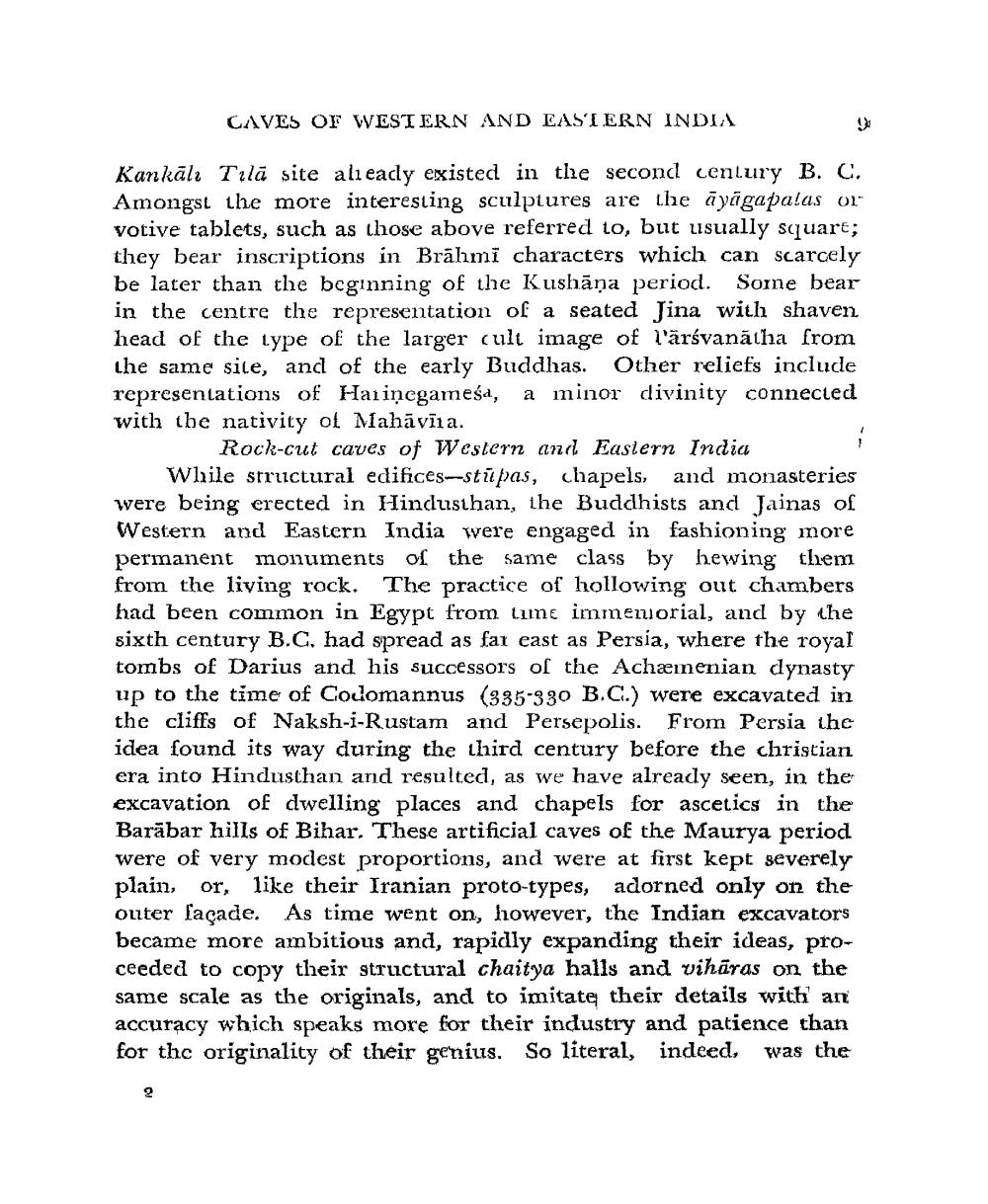________________
CAVES OF WESTERN AND EASTERN INDIA
Kankali Tilā site alieady existed in the second century B. C. Amongst the more interesting sculptures are the ayagapalas or votive tablets, such as those above referred to, but usually square; they bear inscriptions in Brahmi characters which can scarcely be later than the beginning of the Kushana period. Some bear in the centre the representation of a seated Jina with shaven head of the type of the larger cult image of l'arśvanatha from the same site, and of the early Buddhas. Other reliefs include representations of Harinegamesa, a minor divinity connected
with the nativity of Mahāvīta.
2
6
Rock-cut caves of Western and Eastern India
While structural edifices-stūpas, chapels, and monasteries were being erected in Hindusthan, the Buddhists and Jainas of Western and Eastern India were engaged in fashioning more permanent monuments of the same class by hewing them from the living rock. The practice of hollowing out chambers had been common in Egypt from time immemorial, and by the sixth century B.C. had spread as far east as Persia, where the royal tombs of Darius and his successors of the Achæmenian dynasty up to the time of Codomannus (335-330 B.C.) were excavated in the cliffs of Naksh-i-Rustam and Persepolis. From Persia the idea found its way during the third century before the christian era into Hindusthan and resulted, as we have already seen, in the excavation of dwelling places and chapels for ascetics in the Barabar hills of Bihar. These artificial caves of the Maurya period were of very modest proportions, and were at first kept severely plain, or, like their Iranian proto-types, adorned only on the outer façade. As time went on, however, the Indian excavators became more ambitious and, rapidly expanding their ideas, proceeded to copy their structural chaitya halls and vihāras on the same scale as the originals, and to imitate their details with an accuracy which speaks more for their industry and patience than for the originality of their genius. So literal, indeed,
was the




